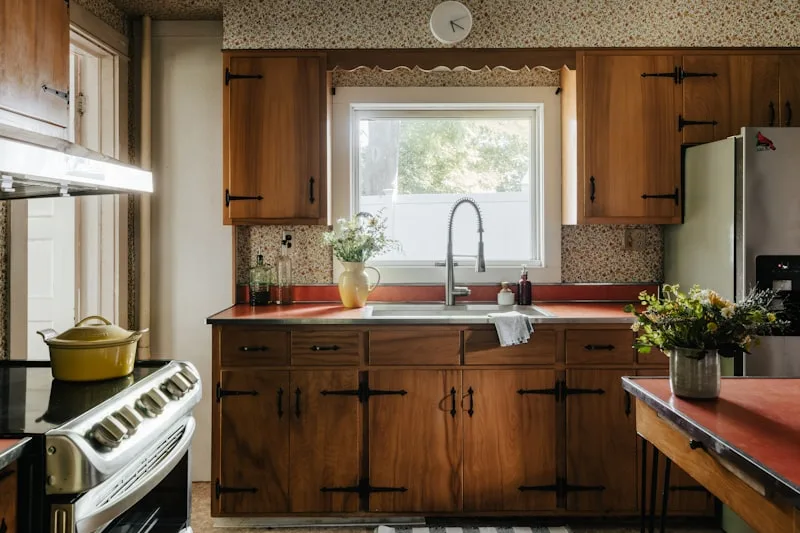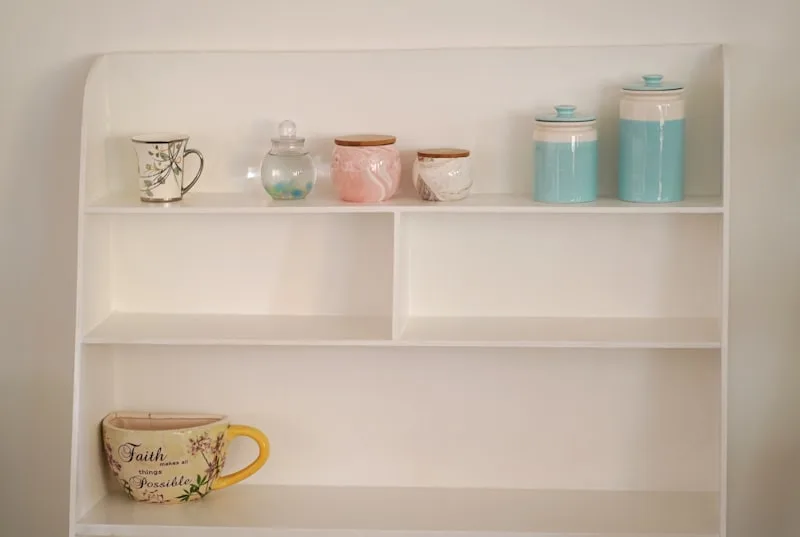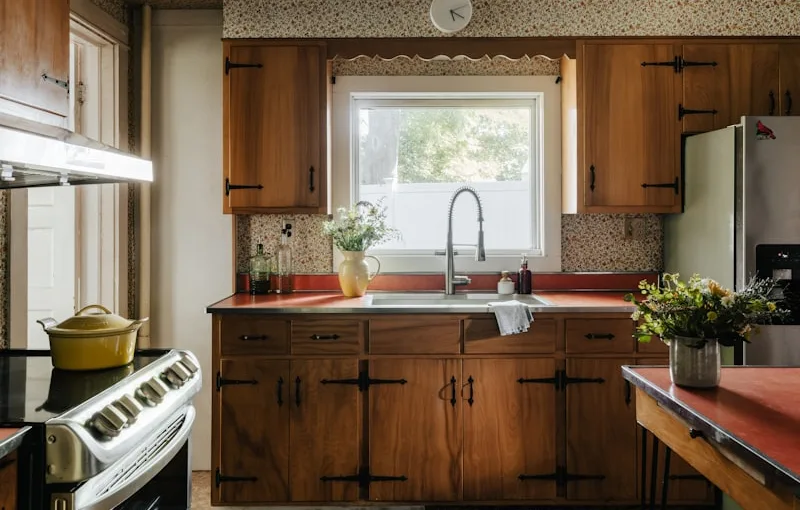First off, think about how often you use those cabinets. If you’re like most people, your kitchen is the heart of your home, and those doors get a workout! Over time, constant opening and closing can wear down the hinges, much like how a well-loved pair of shoes eventually shows signs of wear. If your hinges are made from low-quality materials, they might not stand up to the daily grind, leading to frequent breakage.
Another sneaky culprit could be the weight of your cabinet doors. If you’ve loaded them up with heavy dishes or pantry items, it’s like asking a tightrope walker to carry a backpack full of bricks. The extra weight puts undue stress on the hinges, causing them to bend or break. Have you considered redistributing the weight or even opting for lighter materials?
Humidity is another factor that can’t be ignored. Kitchens can get steamy, and that moisture can warp the wood of your cabinets, misaligning the hinges. It’s like trying to fit a square peg in a round hole—eventually, something’s got to give.
Lastly, improper installation can lead to a world of trouble. If the hinges aren’t aligned correctly, they’re set up for failure from the get-go. It’s like trying to build a house on a shaky foundation; it just won’t hold up.
So, next time you find yourself wrestling with a stubborn cabinet door, consider these factors. Your kitchen deserves better, and so do you!
The Hidden Culprits: Why Your Kitchen Cabinet Hinges Keep Breaking
First off, let’s talk about the weight of your cabinets. If you’ve stuffed them to the brim with pots, pans, and who knows what else, those poor hinges are bearing the brunt of the load. Think of it like trying to lift a heavy backpack; eventually, something’s gotta give. Over time, the constant strain can lead to wear and tear, causing those hinges to snap like a twig under pressure.
Then there’s the quality of the hinges themselves. Not all hinges are created equal! If you’ve opted for the cheapest option, you might be setting yourself up for failure. It’s like buying a flimsy umbrella expecting it to withstand a storm. Investing in high-quality, durable hinges can save you a lot of headaches down the line.
Another sneaky culprit? Humidity. Kitchens can get steamy, and that moisture can warp your cabinets, putting extra stress on the hinges. Imagine trying to fit a square peg in a round hole; it just doesn’t work! Keeping your kitchen well-ventilated can help combat this issue.
Lastly, let’s not forget about installation. If your hinges aren’t aligned properly, it’s like trying to drive a car with a flat tire. Misalignment can lead to uneven pressure, making them more prone to breaking. So, next time you’re tackling a DIY project, double-check those measurements!
Understanding these hidden culprits can help you keep your kitchen cabinets in tip-top shape.
Hinge Havoc: Understanding the Common Causes of Kitchen Cabinet Failures
First off, let’s talk about the hinges themselves. These little metal pieces are like the backbone of your cabinets, and if they’re not installed correctly, you might as well be asking for trouble. Over time, loose screws can lead to misalignment, causing doors to sag or even swing open unexpectedly. It’s like trying to balance a stack of books on a wobbly table—eventually, something’s gotta give!
Then there’s the weight of the cabinet doors. If you’ve loaded them up with heavy pots and pans, you might be putting undue stress on those hinges. Think of it like carrying a backpack that’s way too heavy; eventually, your shoulders are going to start complaining.
Humidity is another sneaky culprit. In kitchens, where steam and moisture are often at play, wood can swell and warp. This can lead to doors that stick or don’t close properly. It’s like trying to fit a square peg in a round hole—frustrating, right?
Is Your Kitchen Driving You Crazy? The Mystery Behind Broken Cabinet Hinges

First off, think of your cabinet hinges as the unsung heroes of your kitchen. They bear the weight of your cabinets and endure daily wear and tear. Over time, they can become loose or even break, leading to those annoying moments when a door won’t close properly or swings open unexpectedly. It’s like trying to dance with a partner who keeps stepping on your toes—super annoying, right?
So, what causes these pesky hinge problems? One common culprit is humidity. Kitchens can get steamy, especially when you’re whipping up a storm. This moisture can warp the wood or the hinges themselves, leading to misalignment. Imagine trying to fit a square peg in a round hole; it just doesn’t work!
Another factor is the quality of the hinges. If you’ve opted for the budget-friendly options, you might be setting yourself up for disappointment. Cheap hinges can wear out faster than you can say “dinner’s ready!” Investing in sturdy, high-quality hinges is like choosing a reliable car—you want something that will last through the bumps in the road.
From Wear and Tear to Poor Installation: What’s Really Breaking Your Cabinet Hinges?
First off, wear and tear is a natural part of life. Just like your favorite pair of jeans, cabinet hinges can get worn out over time. But here’s the kicker: it’s not just age that’s the culprit. Poor installation can be a sneaky villain in this saga. Imagine trying to build a house on a shaky foundation; it’s bound to crumble. If your hinges weren’t installed correctly, they might be under unnecessary stress, leading to premature failure.
Now, let’s talk about the weight of your cabinets. Are you cramming them full of heavy dishes or that massive collection of spices? Think of your hinges as the unsung heroes holding everything together. Overloading them is like asking a tightrope walker to carry a boulder—eventually, something’s got to give.
And don’t forget about humidity! If you live in a humid area, the moisture can warp your cabinets, putting extra strain on those hinges. It’s like trying to fit a square peg in a round hole; it just doesn’t work.
The Costly Consequences of Broken Hinges: How to Save Your Kitchen Cabinets
When hinges break, it’s not just about replacing them. You might need to fix or even replace the entire cabinet door, which can be a real wallet-drainer. Think of it like a domino effect: one broken hinge can lead to misalignment, causing stress on the entire cabinet structure. Before you know it, you’re looking at a full renovation instead of a simple fix.
So, how can you save your kitchen cabinets from this fate? First off, regular maintenance is key. Just like you wouldn’t ignore a squeaky wheel on your bike, don’t overlook those hinges. A little oil can go a long way in keeping them functioning smoothly. And if you notice any signs of wear, like rust or wobbling, it’s time to act.
Consider investing in high-quality hinges. Sure, they might cost a bit more upfront, but think of them as the sturdy foundation of your kitchen. It’s like choosing a reliable car over a flashy one; the long-term benefits far outweigh the initial cost. Plus, you’ll save yourself the headache of frequent repairs.
Hinge Health Check: Signs Your Kitchen Cabinets Need Immediate Attention
First off, let’s talk about those hinges. They’re the unsung heroes of your kitchen, quietly holding everything together. But just like any hardworking hero, they can wear out over time. If you notice your cabinet doors sagging or misaligned, it’s a clear sign that your hinges are crying for help. Think of it like a door that’s lost its way—without a little TLC, it might just swing wide open at the worst possible moment!
Next, pay attention to any unusual noises. If your cabinets sound like they’re auditioning for a horror movie every time you open them, it’s time to investigate. Squeaking or grinding noises can indicate that the hinges are rusting or have accumulated grime. A little oil can work wonders, but if the noise persists, it might be time to replace those hinges altogether.
And let’s not forget about the aesthetics! If your cabinet doors are uneven, it can throw off the entire vibe of your kitchen. It’s like wearing mismatched socks to a fancy dinner—just doesn’t feel right, does it?

Lastly, check for any visible damage. Cracks or chips around the hinge area can lead to bigger problems down the line. Just like ignoring a small leak in your roof, neglecting these signs can lead to a full-blown cabinet crisis. So, keep an eye on those hinges, and your kitchen will thank you!
Frequently Asked Questions
How Can I Prevent My Cabinet Hinges from Breaking?
To prevent cabinet hinges from breaking, regularly check for loose screws and tighten them as needed. Avoid overloading cabinet doors and ensure they open and close smoothly. Lubricate hinges periodically to reduce friction and wear. Replace any damaged hinges promptly to maintain functionality.
What Are the Signs of Worn-Out Cabinet Hinges?
Worn-out cabinet hinges can manifest through several signs, including difficulty in opening or closing doors, misalignment of cabinet doors, visible rust or corrosion, and unusual noises like squeaking or grinding. If the doors sag or do not stay closed, it may indicate that the hinges need replacement.
What Causes Kitchen Cabinet Hinges to Break?
Kitchen cabinet hinges can break due to several factors, including wear and tear from frequent use, improper installation, or using hinges that are not suitable for the cabinet’s weight. Environmental factors like humidity can also cause wood to expand and contract, leading to hinge failure. Regular maintenance and choosing the right hardware can help prevent these issues.
How Do I Know When to Replace My Cabinet Hinges?
To determine when to replace cabinet hinges, look for signs of wear such as difficulty in opening or closing doors, visible rust or corrosion, and misalignment of the cabinet doors. If the hinges are squeaking or making noise despite lubrication, or if they are cracked or broken, it’s time for a replacement to ensure proper functionality and maintain the appearance of your cabinets.
Are There Different Types of Hinges for Kitchen Cabinets?
Various hinge types are available for kitchen cabinets, each designed for specific functions and aesthetics. Common types include concealed hinges, which are hidden when the door is closed; overlay hinges, which allow doors to cover the cabinet frame; and inset hinges, which are used for doors that sit flush with the cabinet. Additionally, soft-close hinges prevent slamming, while pivot hinges enable doors to swing open from a central point. Choosing the right hinge type enhances both functionality and style in your kitchen.
